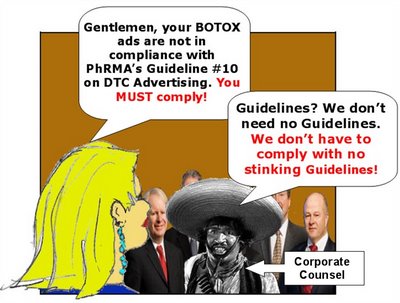Did Rost Just Pull a Mike Huckabee?
 Yesterday, I received an email from Peter Rost entitled "Schering-Plough tries to silence upcoming BrandweekNRX article," in which he summarized correspondence between him and some lawyer at Schering-Plough regarding an expose he said he was writing for BrandweekNRx/BrandWeek. I believe the documents in that correspondence were also posted on NRx for a short time yesterday, but I can no longer find that post.
Yesterday, I received an email from Peter Rost entitled "Schering-Plough tries to silence upcoming BrandweekNRX article," in which he summarized correspondence between him and some lawyer at Schering-Plough regarding an expose he said he was writing for BrandweekNRx/BrandWeek. I believe the documents in that correspondence were also posted on NRx for a short time yesterday, but I can no longer find that post.
Over the weekend, Rost wrote a letter to Ken Banta, a strategic adviser to Schering-Plough CEO Fred Hassan, asking him to confirm or deny a couple of statements in an "upcoming story we are writing for BrandWeekNRx/BrandWeek." The first three statements made some damaging revelations about Fred Hassan's wife and her shady-sounding real estate deals involving Schering-Plough properties. Here's Rost's email to Schering-Plough regarding that story (click image to enlarge and read):
[Sorry, that image is no longer available!!! You'll have to take my word for it -- also, see Rost's comment to this post.]
The problem is that Rost hasn't written that story. He has, however, written an excellent story focusing on Hassan and what a terrible job he's doing (see "Did Fred Hassan use smoke-and-mirrors to 'turn around' both Pharmacia and Schering-Plough?").
"This is the story Schering-Plough tried to stop," Rost claimed in email I received this morning. But there is no mention of Mrs. Hassan in the story.
I think this may be the first case of a "Mike Huckabee" style withdrawal of a negative attack piece in Pharma BlogosphereTM history!
P.S. Peter, I think you're doing a great job! Keep up the good work.










